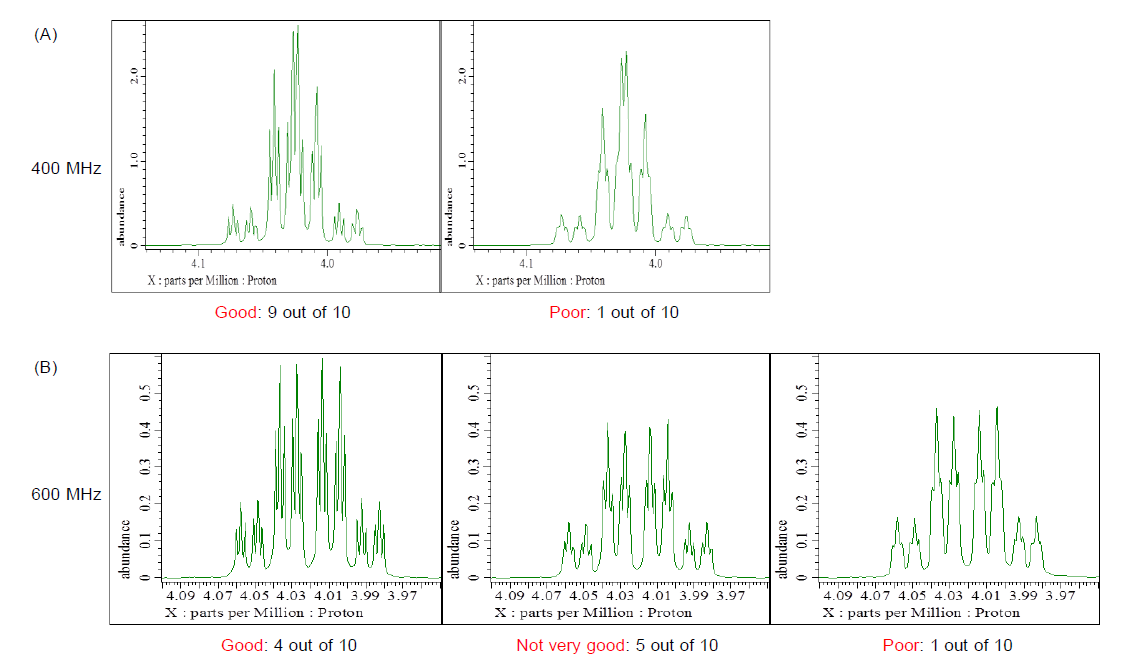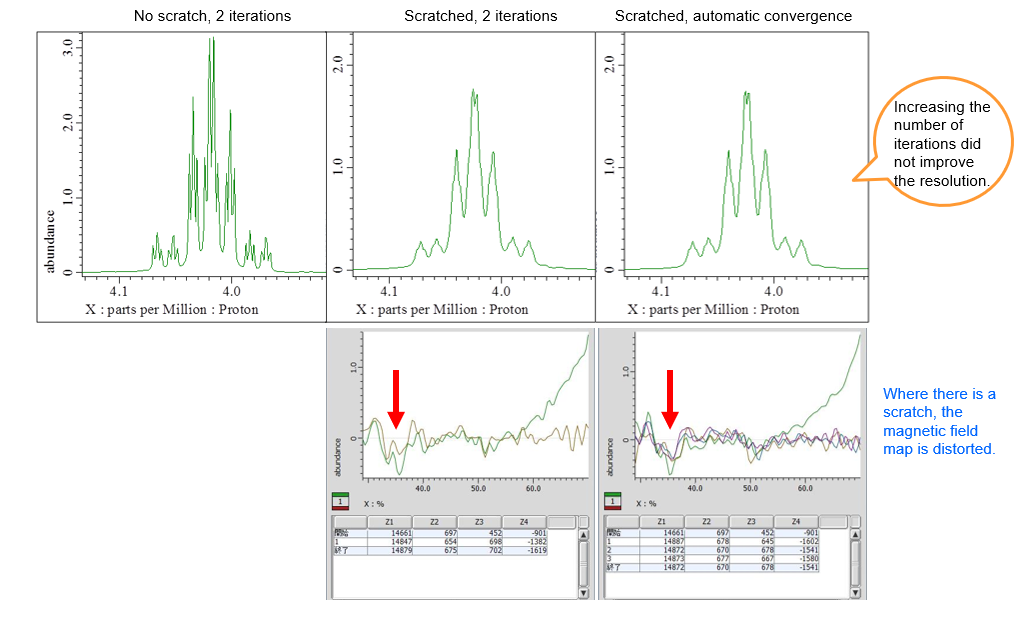Sample tube grade affects resolution
Some low-grade, inexpensive NMR sample tubes have large warpage, low wall thickness uniformity, and large distortion, which may adversely affect the resolution. The effect of low-grade sample tubes, such as disposable ones, on the resolution is small in low-field NMR, but it may be noticeable in high-field NMR. In addition, some disposable sample tubes are thicker or thinner than the nominal value and will not fit in the sample holder.
Good resolution cannot be expected with low grade sample tubes in high-field NMR
To examine the effect of disposable sample tubes on resolution, data measured on 400 MHz and 600 MHz spectrometers were compared. The sample solution was prepared in advance and dispensed into 10 disposable sample tubes. The gradient shim was performed with two iterations of magnetic field correction.
The resolution of one out of ten samples was poor on the 400 MHz spectrometer (shown in Figure A). On the other hand, when these ten samples were measured with the 600 MHz spectrometer, four of the ten samples showed good resolution, but five did not have very good resolution and one had poor resolution (shown in Figure B). The distortion of the static magnetic field resulting from the distortion of a sample tube is proportional to the magnetic field strength. Note that as the magnetic field strength increases, the effect of sample tube distortion on the resolution increases.

Resolution of 10 identical samples
Results of gradient shimming on (A) 400 MHz and (B) 600 MHz NMR.
If good resolution is not achieved, it may be possible to improve the resolution by increasing the number of iterations of the magnetic field correction or by adding the magnetic field correction with auto shim or FID shim after gradient shimming, but this may not be possible. In other words, using a highly accurate sample tube depending on the magnetic field strength of the NMR will lead to stable and high resolution data. If the sample tube is not suitable for the magnetic field strength, it cannot be said that the resolution will definitely increase.
If a sample is measured with a 400 MHz NMR and the resolution is good, but not good when the same sample is measured with a higher field NMR, it may be due to the grade of the sample tube as mentioned above. However, a low-grade sample tube does not necessarily impair the resolution. After sample preparation, the grade of the sample tube tends to be unknown. If the sample tube grade is suspected to be the cause of the poor resolution, it is recommended to consider changing the sample tube.
Resolution when using a scratched sample tube
Even if the sample tube is highly accurate, scratches can cause localized distortion of the magnetic susceptibility, resulting in poor resolution. The spectrum in the center of the figure below is the data obtained by measuring with a scratched sample tube. Gradient shim conditions are the same as those without scratches (left in the figure below), but resolution did not improve. If you use the Gradient Shim Tool for shimming, you can see the magnetic field map at the time of magnetic field correction (lower part of the figure below). In this figure, you can see that the magnetic field map is distorted where there are scratches. Even if the number of iterations was increased until the magnetic field correction results converged, the resolution did not improve (right figure below). It is strongly recommended to replace the sample tube if it becomes scratched. In order to always achieve good resolution, it is important to be careful not to mix low-precision or scratched sample tubes with high-precision ones.

Effect of scratches on resolution
Spectra shown in the upper row and the magnetic field maps in the bottom row. Left; No scratch, 2 iterations. Center; After measuring the data on the left, the sample tube was scratched. The number of magnetic field-corrected iterations is two, which is the same as without a scratch. Right; The same sample as the central data. The number of magnetic field-corrected iterations was judged by automatic convergence to increase the number of iterations.